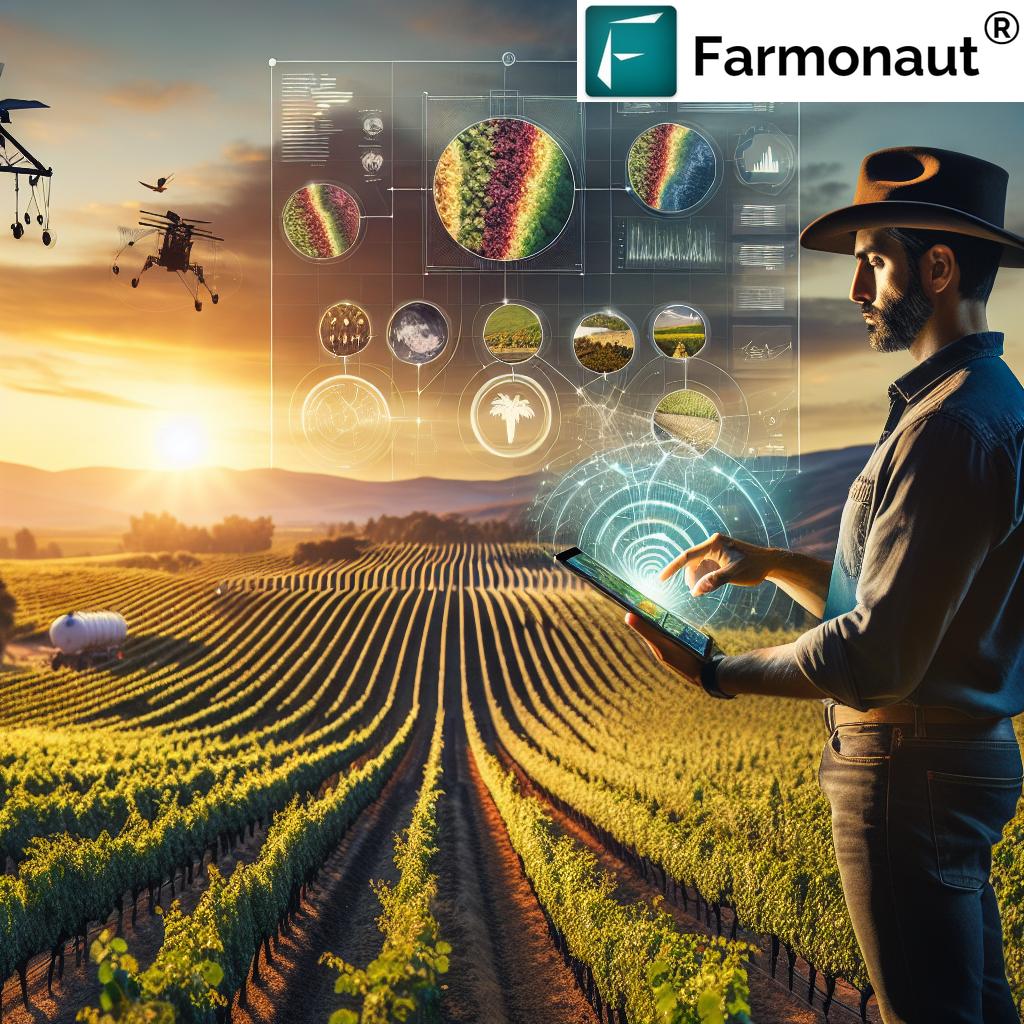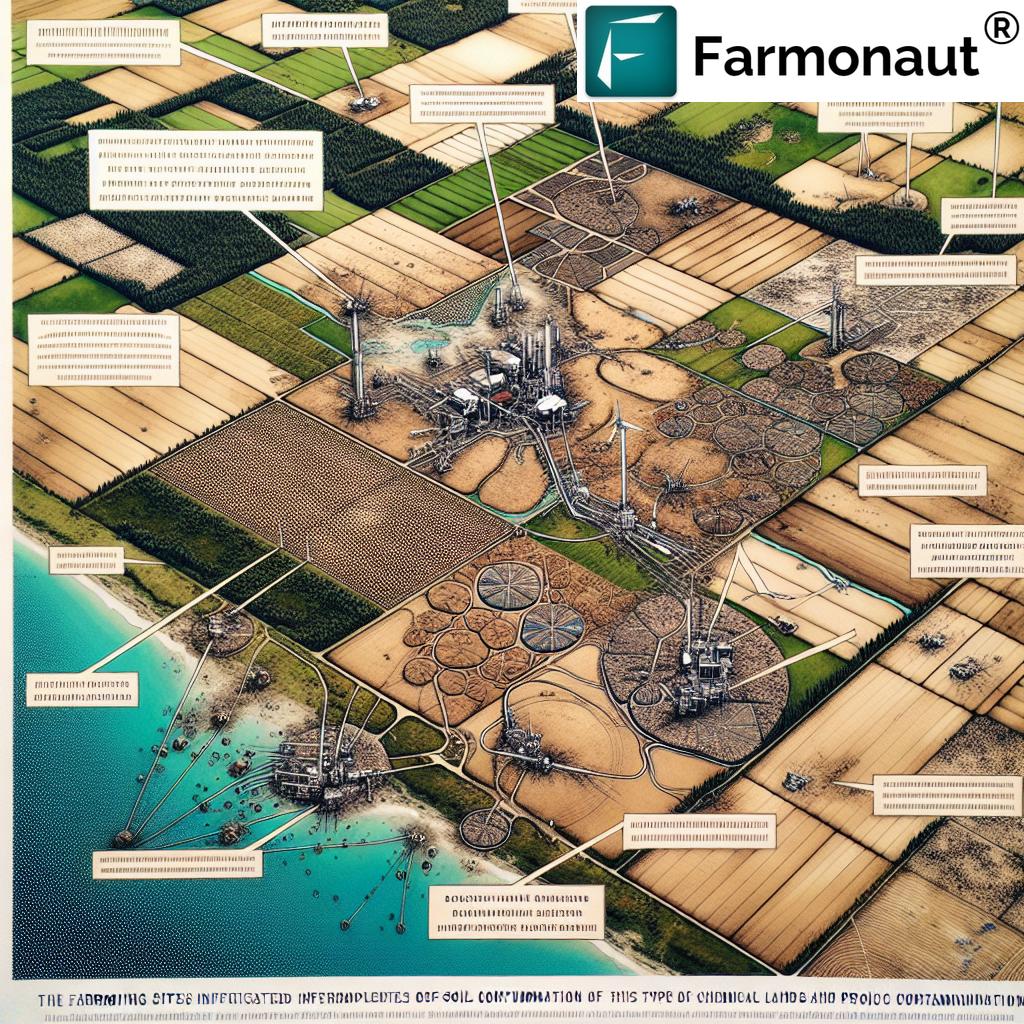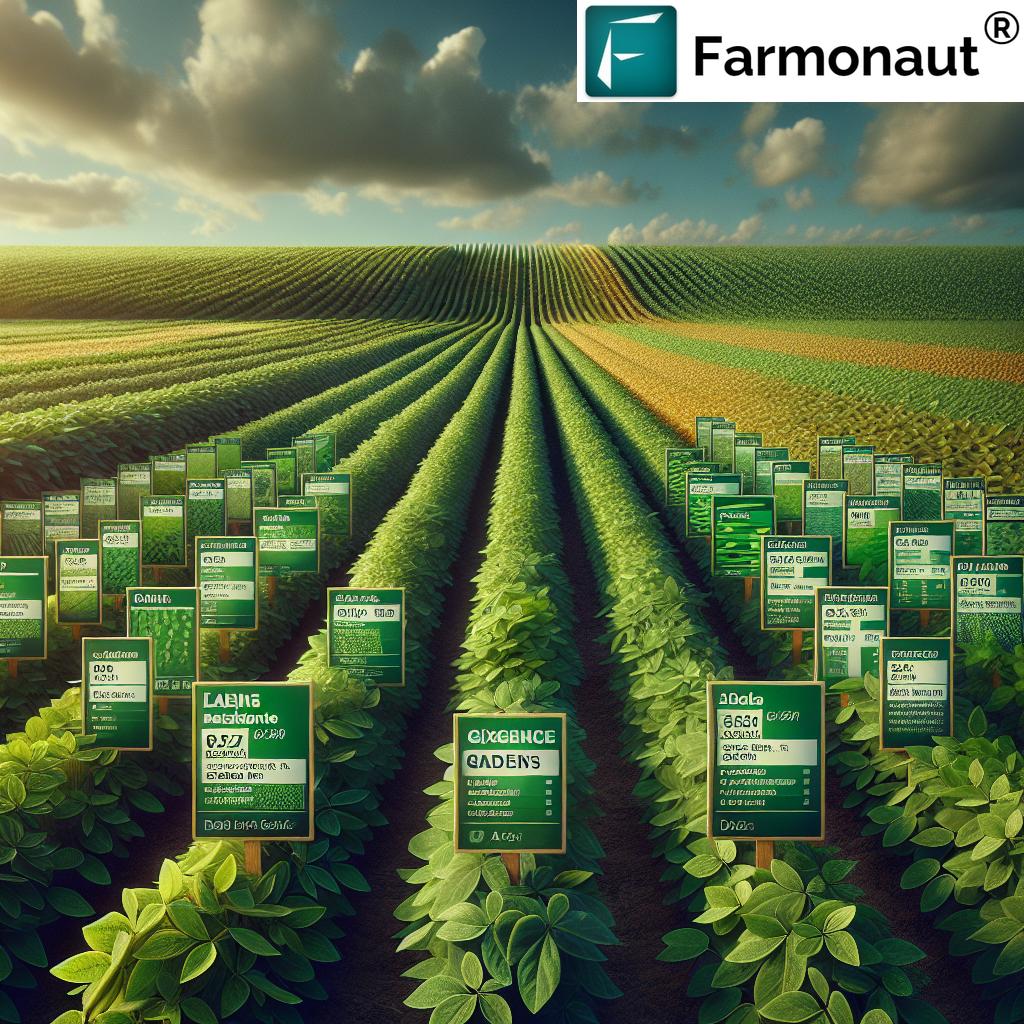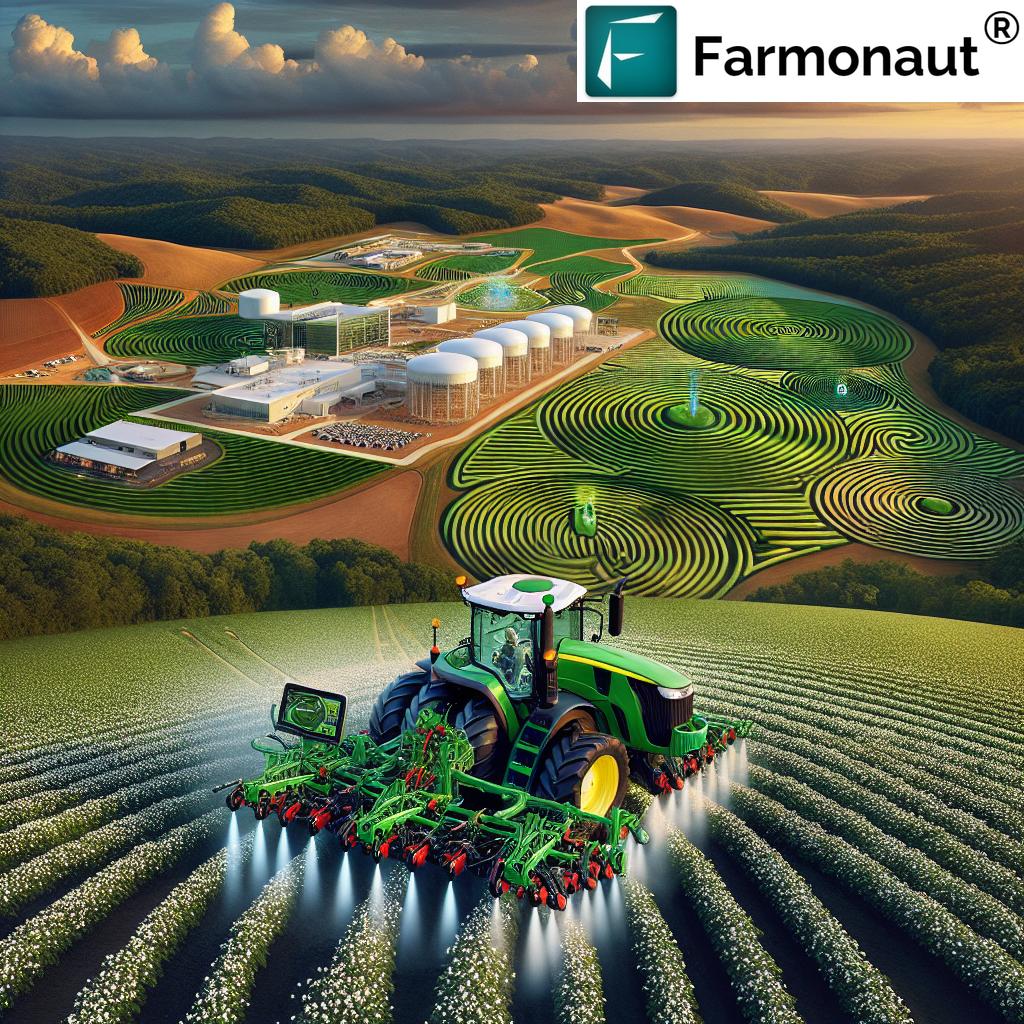Oyster Farming Chesapeake Bay: 2025 Impact on Agriculture
“Oyster farms in Chesapeake Bay filtered over 40 billion gallons of water daily in 2025, improving ecosystem health.”
Introduction: The Chesapeake Bay and Its Pivotal Role
The Chesapeake Bay is the largest estuary in the United States, connecting Maryland, Virginia, and surrounding states into an ecological and economic resource of unparalleled significance. This vital bay is home to more than 18 million people, supports diverse agriculture, world-renowned oyster and shellfish populations, and drives a dynamic local economy.
Yet, the delicate balance between development, agricultural productivity, and environmental health remains a continual challenge. In 2025, the intersection between chesapeake bay agriculture and the region’s water quality, biodiversity, and economic resilience is more critical than ever.
With the rise of oyster farming Chesapeake Bay and the expansion of sustainable farming practices in the entire region, we are witnessing a transformative era where environmental stewardship and economic strength go hand in hand.
How Does Agriculture Impact Chesapeake Bay?
The Chesapeake Bay watershed encompasses over 64,000 square miles, extending into parts of Pennsylvania, Delaware, West Virginia, New York, and the District of Columbia. Across this vast landscape, farming remains a cornerstone—producing corn, soybeans, vegetables, and supporting livestock grazing.
However, agricultural activities also represent prominent nonpoint sources of pollution affecting the bay’s fragile ecosystem. Understanding how does agriculture impact Chesapeake Bay? reveals both challenges and vital opportunities for the future.
Key Environmental Impacts of Chesapeake Bay Agriculture
- Nutrient Runoff: Excess nitrogen and phosphorus, primarily from fertilizers and animal waste, enter the bay through runoff. This process contributes significantly to eutrophication (harmful algal blooms, oxygen depletion, and dead zones) threatening aquatic life.
- Sediment Pollution: Sediment runoff from tilled fields clouds the water, damaging underwater grasses critical for shellfish and fish habitats.
- Chemical Contamination: Pesticides and herbicides, when over-applied, migrate to water sources, causing ecosystem stress.
- Habitat Disruption: Land conversion for farming reduces natural buffers, affecting the region’s biodiversity and resilience.
Despite these challenges, farmers, with support from federal and state programs, are increasingly embracing conservation-oriented best management practices (BMPs) designed to sustain both the economy and environmental health of the region.
Challenges and Conservation: Agriculture’s Evolution in Chesapeake Bay
As we enter 2025, sustainable agricultural development is at the forefront of the region’s priorities.
Environmental Challenges from Traditional Farming Practices
- Excess Fertilizer Application: Leads to nutrient pollution and imbalances in natural aquatic systems.
- Frequent Tillage: Disturbs soil structure, making it vulnerable to erosion and increasing runoff of sediment into the bay.
- Inadequate Management Plans: Without structured nutrient management plans, waste and fertilizer inputs are poorly optimized, compounding pollution challenges.
- Poor Buffer Zones: Lack of buffer strips along waterways accelerates nutrient and sediment movement into aquatic habitats.
Modern Solutions: Best Management Practices (BMPs) & Conservation Efforts
To address these issues, the Chesapeake Bay region has embraced and implemented BMPs, leading to measurable improvements:
- Cover Cropping: Planting cover crops post-harvest reduces erosion, captures excess nutrients, and improves soil health.
- Riparian Buffer Strips: Vegetated areas along waterways filter runoff, trap pollutants, and protect water quality.
- Reduced and No-Tillage Techniques: Limiting soil disturbance boosts carbon sequestration and minimizes erosion.
- Nutrient Management Plans: Focusing on precise fertilizer use to optimize crop yield and minimize nutrient loss.
- Advanced Technology: GPS-controlled applicators, drone-based monitoring, and real-time soil health assessment enable highly targeted interventions and further reduce environmental impact.
For an in-depth look at carbon footprint reduction strategies in agriculture and aquaculture, explore Farmonaut’s Carbon Footprinting Technology.
These efforts—coupled with smart agricultural equipment Chesapeake residents are adopting—work in tandem to restore and protect the integrity of the bay while sustaining farm productivity.
Oyster Farming Chesapeake Bay: Nature’s Filter and Economic Engine
Just as land-based agriculture is evolving, oyster farming Chesapeake Bay is scaling up conservation and sustainability—offering a natural, environmentally positive solution.
How Oyster Farming Works in the Chesapeake
Oysters are filter feeders—by drawing water through their bodies, they filter out excess nutrients, sediments, and contaminants. This not only improves water clarity and quality but also helps reverse harmful trends caused by agricultural runoff.
- Each oyster can filter up to 50 gallons of water a day.
- Oysters remove nitrogen, phosphorus, and particulates, directly combating eutrophication and dead zones.
Oyster farming techniques in 2025 include:
- Hatchery-Raised Seed Stocking: Protects wild populations by growing oysters in controlled conditions before introducing them to the bay.
- Sanctuary Reefs: Areas where oysters are not harvested, allowing them to grow and reproduce undisturbed. These reefs play a crucial role in long-term ecosystem recovery.
- Rotational Harvesting: Ensures populations are not depleted and supports consistent market supply.
- AI & Monitoring: Technology (such as what we offer at Farmonaut with real-time environmental impact monitoring) is used for habitat assessment, water quality monitoring, and yield optimization in oyster aquaculture.
“Chesapeake Bay oyster farming produced 80 million pounds in 2025, boosting local sustainable seafood markets.”
Economic and Community Impacts
- Local Jobs: Oyster farming supports hundreds of jobs and stimulates local economies in Maryland, Virginia, and neighboring states.
- Seafood Markets: Chesapeake oysters are a premium, sustainable food choice—feeding regional markets while conserving the ecosystem.
- Value-Added Products: Oyster shell recycling, biotechnologies, and eco-tourism initiatives further drive the economic and environmental benefits.
Oyster farming Chesapeake Bay therefore delivers a two-fold advantage—it actively restores the bay’s ecological health while fueling a dependable and lucrative sector that is seen as a model for sustainable food production in the United States.
Comparative Impact Table: Oyster Farming vs. Traditional Agriculture in Chesapeake Bay (Estimated 2025)
| Indicator | Oyster Farming (Estimated 2025) | Traditional Agriculture (Estimated 2025) |
|---|---|---|
| Nitrogen Removal (kg/acre/year) | 160–500 | (-) 30 to +60 (dependent on conservation practices; many farms still net contributors rather than removers) |
| Water Filtration Capacity (gallons/acre/day) | 600,000+ | Negative or neutral (does not filter; contributes pollutants) |
| Local Job Creation (jobs/100 acres) | 8–12 | 3–6 |
| Market Value per Acre (annual, USD) | $20,000–$40,000 | $2,000–$6,000 |
| GHG Emissions (carbon footprint/acre/year, CO2e) | Low/Neutral (can be a net sink) | High (variable by crop, fertilizer use, and equipment) |
| Market Resilience (2025 outlook) | Very strong (driven by demand for sustainable seafood) | Stable but susceptible to environmental regulation and climate change |
The table above demonstrates the clear sustainability and economic advantages that oyster farming Chesapeake Bay offers over traditional agriculture in this uniquely sensitive watershed.
The Chesapeake Farmers Market Movement
The Chesapeake farmers market movement has flourished over the past decade, building vibrant community hubs that connect local producers and consumers in Maryland, Virginia, and the greater bay region. In 2025, these markets are more than just places to buy fresh produce—they are centers for education, conservation, and sustainable growth.
- Food Security: Markets support regional food self-sufficiency, reducing the carbon footprint of long-distance food transport.
- Economic Boost: Direct-to-consumer sales provide better margins for small and medium farmers, strengthening local economies.
- Conservation Outreach: Many vendors and event organizers integrate conservation information, including how oyster aquaculture and BMPs help restore bay health.
- Market Innovations: Oyster farmers regularly showcase their sustainable seafood at markets, accompanied by resources explaining the role of oyster aquaculture in bay restoration.
Additionally, digital advancements (such as online ordering and traceability) promoted via Farmonaut’s Product Traceability Solutions help markets maintain food safety, build trust among consumers, and increase accessibility.
Thus, Chesapeake farmers markets play a critical role in supporting agricultural innovation, conservation, and community development.
Agriculture Equipment Chesapeake: Precision, Technology & Sustainability in 2025
The 2025 landscape of agriculture equipment Chesapeake region farmers use is undergoing a revolution. Precision agriculture, powered by satellite data, AI, and IoT, is driving measurable improvements for soil health, resource efficiency, and water quality.
Key Equipment & Technology Innovations
- GPS-guided Tractors: Precision application of fertilizer and pesticides reduces excess use and runoff, directly protecting water quality.
- Automated Irrigation and Soil Moisture Sensors: Controlled, data-driven irrigation minimizes waste and prevents overwatering.
- Drone Monitoring: Real-time imaging helps farmers spot problem areas, address nutrient deficiency zones, and check on cover cropping success (see Farmonaut solutions below).
- Cover Cropping Machinery: Specialized seeders and planters enable farmers to integrate multi-species cover crops to optimize soil health and runoff control.
- Harvesting and Sorting Technology: Oyster farms deploy underwater drones and sorting systems to optimize yields and minimize resource waste.
These innovations help regional farmers optimize fertilizer use, minimize runoff, and boost long-term both environmental and economic sustainability.
Farmonaut: Satellite Technology for Transforming Chesapeake Bay Agriculture
As agricultural challenges grow, precision technology and data science have become essential. At Farmonaut, we are proud to contribute to the sustainability and efficiency of Chesapeake Bay agriculture through our cutting-edge satellite-based solutions.
Our Core Offerings for Farmers and Agribusinesses in the Chesapeake Bay Region:
- Real-Time Satellite Monitoring: We deliver multispectral imagery that enables comprehensive crop, soil, and field condition insights—guiding smarter nutrient management and optimized equipment use.
- AI-Based Advisory: Our Jeevn AI system analyzes satellite data and weather, offering practical, field-specific recommendations for harvesting, irrigation, cover cropping, and more.
- Blockchain Traceability: Authenticates sustainable food products from farm to table, building trust for Chesapeake farmers markets and seafood outlets.
- Fleet and Resource Management: Manage tractors, seeding equipment, and aquaculture fleets for better fuel efficiency, real-time location tracking, and reduced operational costs.
- Environmental Impact Tracking: We empower decision-makers to monitor carbon footprint, GHG emissions, and resource use, supporting compliance and sustainability initiatives for both land-based and aquaculture operations.
- API Integration: For businesses and developers designing custom market tools, our industry-leading Satellite Data API and comprehensive API Developer Documentation provide seamless integration with new or legacy platforms.
Our cost-effective, modular approach ensures that both smallholders and large enterprises in the Chesapeake region can scale operations intelligently and sustainably. Whether it’s real-time environmental impact monitoring, blockchain-powered traceability, or intuitive farm management for oyster and crop producers—our platform is designed to meet the challenges of 2025 and beyond.
For those seeking risk reduction and financial assurance for crop or oyster operations, our Crop Loan and Insurance Verification Platform uses satellite-driven evidence to streamline and secure loan and insurance adjudication.
2025 & Beyond: A Sustainable Chesapeake Bay Region
With the above synergies—land and aquatic innovations, technology integration, robust market ecosystems, and supportive community engagement—the Chesapeake Bay region is positioned to be a beacon of sustainable agriculture and aquaculture into the next decade.
Expected Future Trends
- Continued Expansion of Oyster Farming Chesapeake Bay: As demand for sustainable seafood grows and water quality regulations tighten, oyster aquaculture will remain a central piece of the region’s conservation and economic development strategy.
- Smart Agriculture Driven by Data: Satellite-powered monitoring, IoT devices, and AI-based tools will further optimize resource management, reduce environmental impacts, and enable precision agriculture on a massive scale.
- Integration with Climate-Smart Policy: Both traditional farms and oyster producers will participate in carbon offset and biodiversity credits as the region becomes a testing ground for innovative climate finance solutions.
- Strengthened Community Markets: The Chesapeake farmers market system will continue to thrive as consumers prioritize traceable, local, and sustainable foods.
- Environmental Education: Farmers, fishers, and local governments will invest further in education and outreach, empowering all stakeholders to make evidence-based environmental decisions.
FAQ: Oyster Farming & Chesapeake Bay Agriculture in 2025
Q1: How does agriculture impact Chesapeake Bay water quality today?
Agriculture remains a significant source of nonpoint source pollution including excess nutrients (nitrogen, phosphorus) and sediments that enter the bay via runoff. Despite ongoing challenges, widespread adoption of BMPs (cover cropping, riparian buffers, precision fertilizer use) is reducing these impacts and supporting water quality improvements.
Q2: What drives the growth of oyster farming Chesapeake Bay?
The main drivers are increased demand for sustainable seafood, robust environmental benefits (water filtration, nitrogen removal), and strong support from both conservationists and local businesses. Technological advances and sanctuary policy frameworks also help prevent overharvesting of wild stocks.
Q3: How has precision agriculture equipment Chesapeake region benefited?
The adoption of GPS-guided tractors, automated irrigation, drone-based monitoring, and real-time soil sensors has optimized farm inputs, improved yields, and significantly reduced the excess runoff of nutrients and pesticides—bolstering both economic returns and environmental sustainability.
Q4: Can sustainable oyster farming completely restore the bay?
While oyster farming has a profound positive impact—filtering billions of gallons of water daily and removing tons of nutrients—restoration of the bay requires a multipronged approach. This includes additional efforts in land-based conservation, policy support, and continued innovation in both terrestrial and aquatic resource management.
Q5: What does the future hold for Chesapeake farmers market systems?
The next decade will see greater emphasis on local, traceable foods, with advanced digital platforms (powered by technologies like Farmonaut’s blockchain traceability) empowering market expansion and deeper community engagement.
Q6: Where can I access Farmonaut’s services?
We offer our agricultural satellite monitoring, AI advisory, blockchain traceability, and other solutions through web, Android, iOS platforms and via API for easy integration with workflow systems.
Conclusion: The Path Forward for the Bay
In 2025, the story of Chesapeake Bay agriculture is one of challenge and opportunity. We see that with rapid change in both traditional farming methods and the surge in oyster farming Chesapeake Bay activities, a new narrative is emerging—blending productivity, community, economics, and environmental stewardship.
By harnessing technology, conservation efforts, community-driven Chesapeake farmers market systems, and the remarkable natural ability of oysters to restore water quality, we are setting a precedent for the rest of the United States and the world.
Our collective focus must remain on supporting ecosystem health, boosting local and sustainable markets, and continually improving management practices—all while embracing precision tools and data-driven solutions (like those we offer at Farmonaut) to ensure that the Chesapeake Bay continues to thrive for generations to come.














